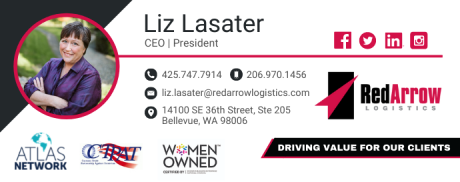Companies often review their supply chain only when there is an issue such as financial challenges. For example, when transportation costs are rising or there are delays in shipping, the supply chain then becomes the focal point of figuring out where the inefficiencies are. However, it is beneficial if a supply chain always operates optimally. Supply chain optimization takes into consideration analysis based on forecast demand and an inventory plan to meet the forecast, also accounting for raw materials, manufacturing, transportation, and distribution.
Supply Chain Optimization Strategies
In order to optimize a supply chain, there are many components that must be reviewed. Strategic, tactical, operational, and contingency planning are all parts of the process. The overall goal of optimization should be to move the supply chain from a reactive approach to a proactive approach.
Strategic Planning: Strategic planning focuses on fundamental changes in the manufacturing and distribution capacity and its long-term impact. Inventory management, production, transportation, and distribution goals are determined and aligned with customer service and technology. Management can also see areas that need improvement and those that need investment. Strategic planning should include forecasting customer demand to allocate resources throughout the supply chain.
The important part of this process is that the strategy is shared with all functions. With supply chains currently changing faster than companies can keep up with, significant modifications to an organization’s structure can have a big impact on the future so it is imperative that all levels are kept abreast of the changes. Reviewing the supply chain network strategically can result in plans for the organization for the next several years.
Tactical Planning: Tactical supply chain planning is short- or medium-term in scope and impact. This part of the planning process should cover one to two years to support the long-term strategy as near-term forecasts are adjusted based on market intelligence or planned promotions. The tactical plan includes the timing for each step of the plan and any requirements needed, such as new warehouse space.
The goal of tactical planning is to minimize total supply chain costs from manufacturing, storage, and transportation over the short term. Companies can benefit from detailed optimization models and advanced planning and scheduling technology (APS). These tools can help determine the best supply chain configuration for sourcing.
Operational Planning: Operational supply chain decisions are made hundreds of times every day on how products are developed, sold, moved, and manufactured. Operational planning refers to the strategy that focuses on the daily activities in supplier relationships, manufacturing, and logistics. These decisions create a framework within the supply chain operation so products more efficiently at the maximum cost-benefit.
When issues arise unexpectantly, operational decisions must be made in order to keep the supply chain moving. For example, if the supplier delivery times are delayed, there may need to be an operational decision to keep certain items in stock so that production continues. This added inventory will increase costs, but there is a greater cost implied if production is halted because supplier items are delayed.
Operational decisions are made with consideration of the strategic and tactical decisions that the company has already adopted. The goal of operational planning is to keep the supply chain moving smoothly and efficiently on a daily basis.
Contingency Planning: Contingency planning, or scenario planning, identifies issues and factors that produce uncertainty. Weather events, labor issues, or loss of major suppliers and vendors can send a business scrambling for solutions. The goal of contingency planning is to consider circumstances that could affect the business and think of responses before it happens in order to minimize disruptions to the business and to customers.
An optimized supply chain enables an organization to ship what the customer wants when they want it while staying within budget for the cost of goods, inventory, manufacturing, and transportation costs. Strategic and tactical supply chain decisions often use third-party logistics companies (3PL) like Red Arrow Logistics to identify areas for optimization. If your supply chain is not delivering to your customers on time while maximizing revenue and minimizing expenses, it is time to optimize by managing suppliers, logistics, and costs.
Your Trusted Partner
At Red Arrow Logistics, we provide expertise and white glove customer service with fast-growing, complex, and high-value supply chains. As the next-generation model of logistics companies, we offer tailored transportation and logistics solutions — from single shipments to complex over-dimensional and international orders.
Red Arrow offers the scale and scope of services including air, ocean, and ground transportation to meet the budget and schedule requirements of the largest and smallest companies alike. If we can be of assistance, please email us at info@redarrowlogistics.com or give us a call at 425-747-7914.





